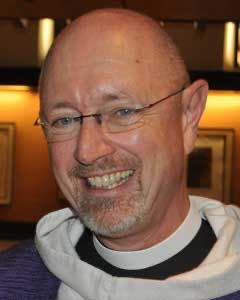The scene is an up-scale auction house in Montreal; the timeis the present. The auctioneer (Colm Feore) has come to the final item available: “Hereshe is now, lot 72 — the so called ‘Red Violin.'”
The bidding starts, the camera pans around the small, crowded room, the faces of the anxious bidders fill the screen, and the price of this 300-year-old instrument begins to soar. Over and over again in The Red Violin, the auction scene is replayed as the story of the journey of this instrument through three centuries and five countries is revealed.
Director Francois Girard (Thirty-Two Short Films About Glenn Gould) co-wrote the screenplay with Don McKellar (Last Night). These Canadian film makers took three years to make the transition from script to screen. It is a beautifully crafted film, a meditation on time and fate, a feast for the eye and the ear. It has also been nominated for 10 Genie awards.
Using a series of flashbacks, the film traces the journey of the red violin, starting from the town of Cremona, Italy, in 1691, and ending at the auction house in Montreal. As well as returning to the auction, the film keeps returning to Cremona, where the violin was crafted by Nicolo Bussotti (Carlo Cecchi). Bussotti’s wife, Anna (Irene Grazioli), is having her fortune told. As Madame Leroux (Monique Mercure) turns over Tarot cards, the future is foretold: the fate of all those who have the fortune – and misfortune – of encountering the red violin.
It is an extraordinary instrument, the finest violin ever crafted by Bussotti, but its creation becomes inextricably linked with the tragic death of his wife and son in childbirth. From Cremona, the violin travels to an orphanage run by Austrian monks where it joins dozens of other violins played by students. One student, Kaspar Weiss (Christoph Koncz, a real-life virtuoso) receives the violin and displays exceptional abilities and is taken away from the orphanage for formal training. Weiss is captivated by the violin. It is his whole life and he plays it beautifully. But when there is the possibility that it might be taken away from him, his heart breaks. The violin has again met, or brought, tragedy.
Another card is turned, another bid is made. The red violin’s journey continues. It goes on to England, to Oxford, where a master violist, Frederic Pope (Jason Flemyng), comes into its possession. Passionate and eccentric, Pope’s time with the violin is short-lived – his relationship with the novelist Victoria Byrd (Greta Scacchi) sours, leading to misfortune yet again.
Another bid, another card. The violin travels from England to Shanghai, China, where for many years it is kept in a pawn shop until purchased by an upper-class family. Its existence is threatened during the cultural revolution of 1968, and it is sold to the auction house by the Chinese government.
An American violin expert, Charles Morritz (Samuel Jackson), is summoned to Montreal to authenticate the red violin through a series of scientific tests. As he gets closer to the violin, he too falls under its spell. The final card is turned, the bidding ends, the violin finds a new home.
Fate, time, character, and culture interplay in this story that mixes short vignettes with a long narrative, creating a unique and memorable film experience. With an original musical score by John Corigliano, The Red Violin leaves you haunted by images, sounds and stories that reveal the mystery of misfortune, the majesty of music, and the journey of time. From an object in an auction to the subject of many lives, The Red Violin reveals the story behind surface, the spirit behind the instrument.
Peter Elliott is dean of Christ Church Cathedral, Vancouver, and a member of the board of directors of the Vancouver Film Festival.




